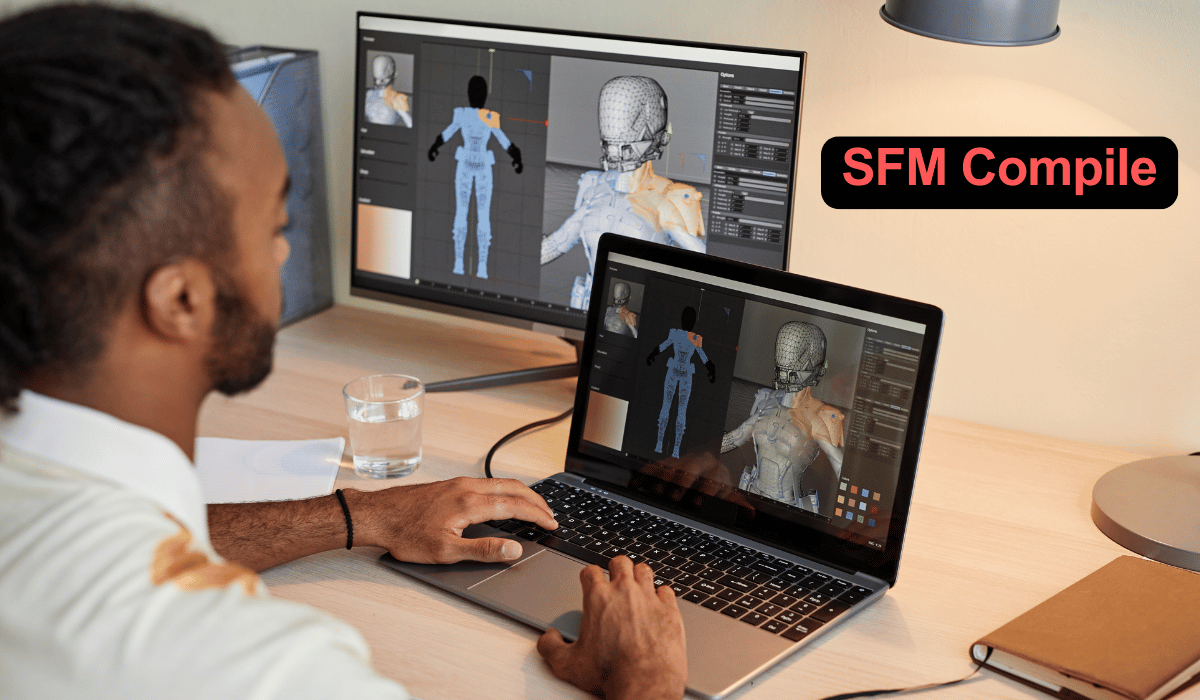What is SFM Compile?
The term sfm compile refers to the process of compiling assets, models, maps, and sequences within Source Filmmaker (SFM)—a powerful animation tool by Valve Corporation. Whether you’re rendering a final video, exporting a project, or converting a model, the sfm compile is the heart of the process.
For animators and creators who work with game-engine content, particularly in the Valve Source Engine, understanding how to properly sfm compile is essential for achieving high-quality, error-free animation.
Why SFM Compile Matters in the Animation Industry
In the world of machinima, game design, and fan animation, creators rely on Source Filmmaker to bring characters and stories to life. But without a proper sfm compile, your hard work may result in missing textures, broken bones, or render glitches.
Benefits of a Proper SFM Compile
-
Smooth animation output
-
Proper texture rendering
-
Accurate lighting and shadows
-
Stable model rigging
-
Clean final export
A successful sfm compile ensures that all assets—from props to characters to backgrounds—work together in harmony, free from error.
Understanding the Source Filmmaker (SFM) Platform
Before diving deep into the sfm compile process, it’s important to understand the environment where it all happens: Source Filmmaker.
What is Source Filmmaker (SFM)?
SFM is a free 3D movie-making application built on the Source game engine. It enables users to create cinematic animations using characters, props, and environments from games like Team Fortress 2, Half-Life, and Portal.
SFM allows users to:
-
Import and manipulate assets
-
Animate rigs and facial expressions
-
Add sound effects and voice lines
-
Render cinematic quality animations
All of this is made possible with the help of a properly executed sfm compile.
Preparing Your Assets for SFM Compile
A major reason sfm compile fails is due to unprepared or incompatible assets. Here’s how to prep like a pro.
1. Naming Conventions
Avoid special characters or spaces in file names. Stick to lowercase and underscores.
2. File Formats
Ensure textures are in .vtf, models in .mdl, and maps in .bsp.
3. Directory Structure
Follow the default SFM structure:
-
models/ -
materials/ -
maps/
Keeping your assets organized is critical for a clean sfm compile.
How to Perform an SFM Compile: Step-by-Step Process
Now let’s walk through a typical sfm compile process for a simple scene.
Step 1: Set Up Your Scene
Open SFM, import your models, lights, and cameras.
Step 2: Animate the Sequence
Create your motion keyframes, add sound, and sync dialogue.
Step 3: Adjust Lighting and Rendering Settings
Tweak shadow details, ambient occlusion, and depth of field.
Step 4: Start the SFM Compile Process
-
Navigate to File > Export > Movie
-
Choose render settings: resolution, format (MP4, AVI)
-
Click Compile or Export
This is the moment of truth where all assets and animation sequences are bundled into one polished product. A successful sfm compile means you’re one step closer to publishing.
Common Errors During SFM Compile and How to Fix Them
Even experienced animators encounter issues. Here are some common sfm compile errors and how to fix them.
Missing Textures
Fix: Check the .vmt file paths and make sure your materials are in the correct folder.
Model Not Found
Fix: Verify your .mdl file is placed correctly inside the models/ folder.
Crash During Compile
Fix: Lower render resolution or check if you’re exceeding system memory.
Lighting Bugs
Fix: Rebuild lighting before starting the sfm compile.
Each error usually has a community-backed solution available on forums like Steam Discussions or SFM Subreddits.
Advanced Tips for a Smooth SFM Compile
Once you’ve mastered the basics, apply these pro-level strategies:
1. Use Batch Files for Automation
Automate multiple sfm compile tasks with batch scripting to save time.
2. Leverage Third-Party Tools
Enhance your compile with tools like:
-
Crowbar (for decompiling and recompiling models)
-
VTFEdit (for texture handling)
-
WallWorm Tools (for Blender or 3DS Max export)
3. Optimize for Final Export
Use lower polygon models and compressed textures during editing, then swap with high-quality assets just before sfm compile.
Tools to Enhance Your SFM Compile Experience
Here’s a curated list of software and utilities that improve the sfm compile workflow:
Crowbar Tool
Used to decompile .mdl files into source assets and recompile them after editing.
VTFEdit
A texture tool that allows conversion to Valve Texture Format (VTF).
Audacity
Syncing audio is critical for animation, and Audacity helps with editing voice lines.
Blender with SFM Export Add-on
Modeling and animating in Blender then exporting to SFM makes sfm compile easier and more dynamic.
Troubleshooting SFM Compile Issues
When your sfm compile process fails, it’s not the end of the world. Use these diagnostics:
Check Console Logs
SFM logs provide detailed error messages that tell you exactly what went wrong.
Rebuild or Reimport Assets
Sometimes models or textures become corrupted. Delete and re-import to fix the issue.
Seek Help from Community
The SFM community is massive. Whether on Discord or Reddit, chances are someone has faced your sfm compile problem before.
Community Forums and Resources for SFM Compile
Joining communities is one of the best ways to troubleshoot sfm compile problems and learn from others.
Top Resources
Ask questions, upload error logs, and share your successful sfm compile tips!

Final Thoughts on Mastering SFM Compile
Mastering the sfm compile process is not just about pressing the export button—it’s about preparing assets correctly, understanding the rendering engine, and constantly learning through trial and error.
If you can learn how to:
-
Organize files properly,
-
Use the right tools,
-
Troubleshoot efficiently,
Then you’re already on your way to becoming an expert at sfm compile.
Don’t be afraid to experiment. Every successful render gets you closer to your animation goals.
Conclusion: Dominate the Animation World with SFM Compile
There’s no shortcut to excellence, but by mastering the sfm compile process, you set yourself apart from casual animators. Whether you’re building fan-made trailers, original stories, or game cinematics, a perfect sfm compile is your ticket to quality production.
Remember:
-
Stay organized,
-
Learn from errors,
-
Use community tools,
-
And never stop exploring the power of SFM.
With time and dedication, your next sfm compile could be the animation that goes viral!
